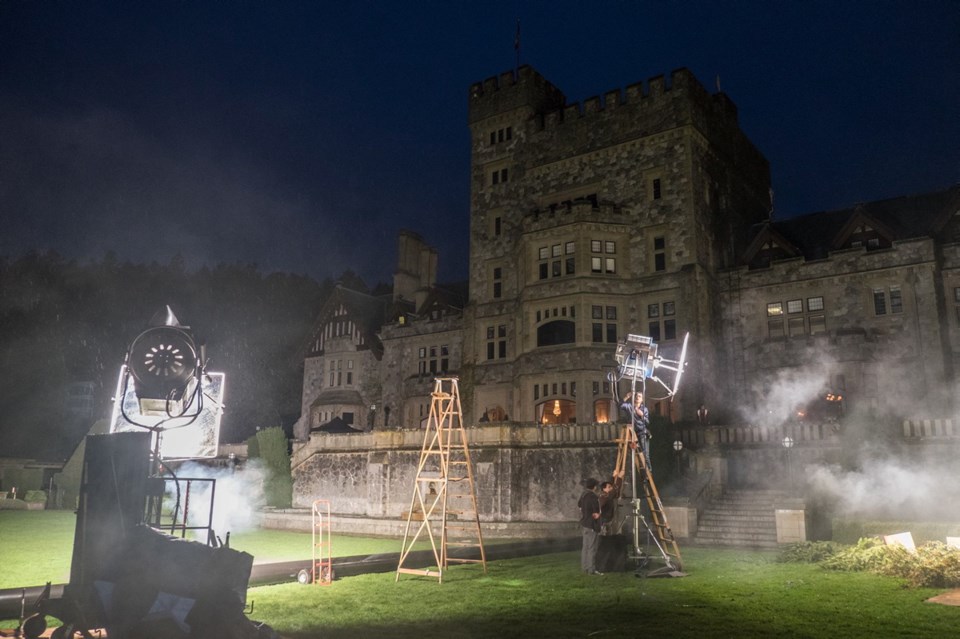As any horror-movie buff knows, the action in a Hollywood haunted house can be hellish. By contrast, William Brent Bell’s experiences exploring the haunted passageways of Craigdarroch Castle, Hatley Castle and a soundstage in Esquimalt were heavenly.
“For me, it was like a dream come true,” said Bell, recalling his 24-day shoot last March for The Boy, his new horror movie. The film stars Lauren Cohan and opens nationwide today (Cineplex Odeon Westshore, SilverCity in Victoria).
Cohan, best known for her role as zombie-apocalypse survivor Maggie Greene in The Walking Dead, plays Greta Evans, a resourceful young woman who flees small-town Montana for the English countryside.
She gets more than she bargains for after being hired by the Heelshires, an eccentric, exceedingly proper British couple, to take care of Brahms, a beloved eight-year-old “boy” who turns out to be a lifesize porcelain doll.
When Greta realizes this couple, grieving a family tragedy, are paying her good money to treat a doll like a real child, she decides to play along.
If this sounds creepy, it’s because that’s the whole point, said Los Angeles-based Bell, who brought us The Devil Inside.
“It’s a sub-genre of horror, a great haunted-house story like The Haunting or the early part of When a Stranger Calls,” said Bell, who eschewed digital effects to make “a beautiful and elegant ghost story kind of thing.”
Describing The Boy as “a very unique movie with twists and turns that feel different than most things in this kind of space,” Bell said the film let him indulge his fascination with scary inanimate objects.
“It’s important that the story becomes relatable, because if it’s too much of a fantasy or the visual effects are too obvious, when you leave the movie you’re kind of letting the audience off the hook, and they’re done with it because it’s such an unreal world,” said Bell, who directed from Stacey Menear’s character-driven script.
“When they go home and think they’re free from the fear and go to bed and wake up that night and go get a glass of water, walking through the house, all of a sudden they will feel scared from what they saw in the film.”
Bell brought some stage and screen luminaries along for the ride, including Diana Hardcastle (The Best Exotic Marigold Hotel), Jim Norton (Harry Potter and the Chamber of Secrets) and Rupert Evans (Hellboy).
Although Cohan attracted the attention of local Walking Dead fans, it didn’t stop her from nailing even her most intense scenes and “she’d do 20 takes if required,” Bell said.
Cohan said it helped that Bell had such a clear idea of how he wanted to tell the story.
“We were completely in sync about the way Greta comes to accept Brahms as a living child,” Cohan said. “The private moments between the two of them are really quite moving and emotional.”
Bell’s technical team included cinematographer Daniel Pearl, whose credits include the original Texas Chainsaw Massacre and its remake, and Todd Masters, the makeup effects artist who created Brahms.
“What we didn’t want was an overtly creepy doll, like Chucky or Annabelle,” said Richard Wright, Lakeshore Entertainment’s executive vice-president of production.
A bonus was that key production personnel, including art director James Steuart, production designer John Willett and set decorator Terry Lewis, were Vancouver Islanders.
“Visually, this was a chance to do something special,” Willett said. “The architecture is almost a character.”
To create the Gothic, remote English manor, at once elegant and sinister, footage filmed in Craigdarroch Castle and Hatley Castle was seamlessly married to interiors, including a grand old attic, built in a warehouse on Ellery Street in Esquimalt.
While it was Victoria’s “big, look-at-me palaces,” as Wright called them, that attracted the filmmakers, the calibre of local crews was equally impressive, Bell said.
“We got a great crew that could have been snatched up by 40 other movies, but luckily they worked with us,” he said, praising what local construction crews achieved in Esquimalt. “A lot of the people weren’t necessarily even film-production builders. They were more local craftsmen, so the quality of the work was even better than it needed to be.”
Bell got the sense the capital region was “beautiful, exactly what we needed and a very pleasant place to shoot” from the moment he arrived, he said. “I also think I got lucky with the weather because everyone said it’s going to rain,” he added with a laugh.
The filmmakers went to great lengths to keep production details under wraps, as well as the four shooting versions of the cherubic Brahms dolls, accompanied by a handler. A giant doll, which could seemingly be brought to life using stop-motion animation, was complemented by others of different sizes that could be posed as required.
“It was very creepy because he travelled around in a clear plastic coffin,” Bell recalled. “Every day, he’d be wheeled away in his coffin, and there would be a bubble where his face was.”
